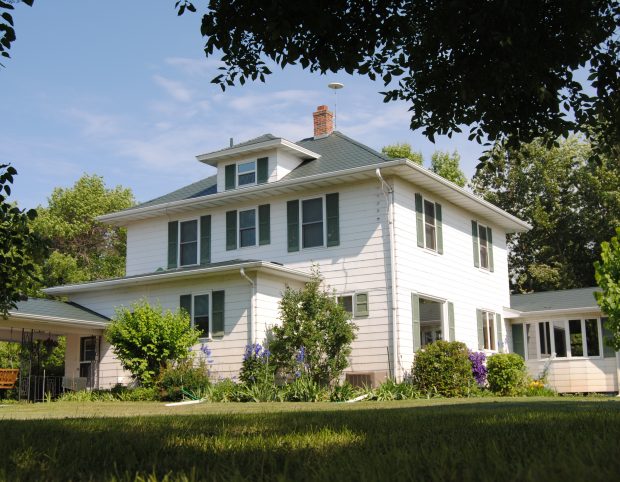When a severe storm rolls through Nebraska, the aftermath can leave your home’s exterior in rough shape. Whether you’re dealing with wind-blown shingles, hail-dented siding, or water intrusion, knowing what steps to take next can help you avoid further damage and a potential headache. Filing a claim for storm damage can seem overwhelming, but with the right knowledge and a trusted local contractor, the process doesn’t have to be stressful. At ABC Seamless of Nebraska, we’re here to walk you through what to expect when filing a storm damage claim, from initial inspection to final repairs.
Does Home Insurance Cover Storm Damage?
Homeowners insurance typically covers storm damage to your roof and siding caused by wind, hail, and falling debris. However, coverage can vary based on your policy, deductible, and the age or condition of your roofing or siding materials. Always review your policy details or speak with your insurance agent to confirm what’s included.
How Do You Check for Storm Damage?
Roof Inspection Checklist
1. Safety First
- Wait for clear weather before inspecting your roof.
- Use binoculars from the ground if you’re uncomfortable climbing a ladder.
2. Exterior Roof Damage Signs
- Missing shingles – High winds often lift or tear shingles off completely.
- Cracked, curled, or dented shingles – Hail can bruise or crack asphalt shingles.
- Granule loss – Check your gutters or downspouts for excessive shingle granules.
- Damaged flashing – Inspect the metal strips around chimneys, vents, and valleys.
- Loose or displaced gutters – Check if gutters are bent or pulled away from the house.
3. Interior Roof Damage Signs
- Leaks or water stains on ceilings or attic insulation.
- Peeling paint or bubbling on walls, which may indicate moisture intrusion.
- Musty smells in the attic or upper floors could signal hidden water damage.
Never climb onto your roof. Leave that to the professionals. Also, some types of damage may not be visible from the ground or even from a ladder, which is why a formal inspection is essential.
Siding Inspection Checklist
1. Visible Cracks or Holes
- Check for splits, chips, or punctures in vinyl, aluminum, or fiber cement siding.
- Impact marks from hail or wind-thrown debris are common indicators.
2. Warping or Buckling
- Look for siding that appears bent, lifted, or pulled away from the structure.
- This may indicate wind damage or hidden water infiltration.
3. Water Damage or Stains
- Dark or discolored areas may be a sign that moisture has seeped behind the siding.
- Check window and door trim for caulking deterioration.
4. Loose or Missing Panels
- Wind can loosen or completely tear off sections of siding.
- Make sure all panels are securely fastened and not rattling or flapping.
In the case of both siding and roof damage, take clear photographs and/or video from various angles and note the time and date the storm occurred. Avoid trying to fix anything yourself, unless it is to prevent further damage (i.e. tarping your roof).
Should You Call Insurance First After Storm Damage?
Yes, it is important to contact your insurance company as soon as you suspect storm damage. Prompt notification helps initiate the claims process and ensures your insurer can schedule an adjuster to assess the damage quickly. Again, be sure to document what you can with photos or videos before any repairs begin.
After contacting your insurance provider, it’s a good idea to reach out to a trusted local contractor, like ABC Seamless of Nebraska, for a free estimate. We can work directly with your adjuster, provide detailed documentation, and ensure nothing is overlooked when repairing/replacing storm damage to your roof or siding.
What Will a Professional Inspection Look for With Storm Damage?
A professional inspection will look for the same things you did on your initial assessment, but in far greater detail. A roofing and siding expert knows what to look for that many homeowners miss, including more subtle signs of storm damage that can cause problems later on.
A professional roofing inspector will look at the following:
1. Shingle Condition
- Missing or dislodged shingles from wind or flying debris.
- Bruised or dented shingles from hail, often with soft spots or broken granules.
- Granule loss exposing the asphalt layer—common with hail damage.
- Cracked, curled, or torn edges, especially on older roofs.
2. Structural & Surface Integrity
- Lifted or loose shingles that may not be immediately visible but are prone to future leaks.
- Warped decking or sagging roof lines suggesting moisture has penetrated deeper.
- Flashing damage, particularly around chimneys, vents, skylights, and valleys.
- Compromised underlayment—inspectors may lift shingles to check beneath the surface.
3. Gutters and Drainage
- Dents or distortion in gutters and downspouts from hail or debris.
- Clogging or water overflow signs, possibly from shingle granules washing off.
- Improper slope or loosened gutter brackets, indicating wind or impact damage.
A professional siding inspection will assess:
1. Surface Damage
- Cracks, chips, or punctures, especially on vinyl or aluminum siding from hail.
- Impact marks or pitting, often found in patterns aligned with wind direction.
- Scratches or abrasions caused by tree branches or flying debris.
2. Panel and Fastening Issues
- Loose, bowed, or missing panels due to wind lifting.
- Warped or wavy siding, which can be a sign of hidden water damage or installation failure.
- Displaced flashing or corner posts, which compromise weather resistance.
3. Moisture Penetration
- Use of moisture meters to detect hidden water behind panels.
- Discoloration, mold, or mildew under eaves or at seams.
- Soft spots or bubbling that may indicate delamination or rot.
How Long Do You Have to File a Claim for Storm Damage?
Most insurance policies allow you to file a claim anywhere from one to two years after the storm, but it’s always best to act quickly. The sooner you document the damage and begin the process, the easier it is to prove that the storm caused the issues. Plus, waiting too long can lead to worsening damage and more costly repairs down the line.
Upgrade to a Metal Roof And Siding For Superior Storm Protection
If your roof has suffered storm damage, it might be time to upgrade—not just repair. Metal roofing offers unmatched durability, making it a smart long-term investment for weather-prone areas. With a Class 4 impact rating (the highest available) our seamless steel roofs are engineered to withstand severe hail without cracking or breaking. They’re also built for high wind resistance, rated to endure gusts up to 160 mph ideal for hurricane and storm zones.
Likewise, our galvanized steel siding is built to last and look good. Choose from 27 colors that match your home’s existing look while gaining the peace of mind that comes with a product that can handle anything Nebraska’s weather dishes out.
Beyond protection, many insurance companies offer discounted rates or lower premiums for homes with metal roofs and siding due to their resilience and reduced risk of costly claims.
Roof And Siding Repair Omaha, Lincoln, Grand Island
If your home has suffered storm damage, acting quickly is key to preventing further issues. Once your claim is approved, you’ll need a dependable contractor to handle the repairs. ABC Seamless of Nebraska specializes in expert roof and siding repair and replacement throughout Omaha, Lincoln, and Grand Island. Our experienced team uses quality materials and skilled craftsmanship to restore your home’s exterior and protect it from future storms. Contact us today to schedule your roof or siding repair.




